Places worth visiting
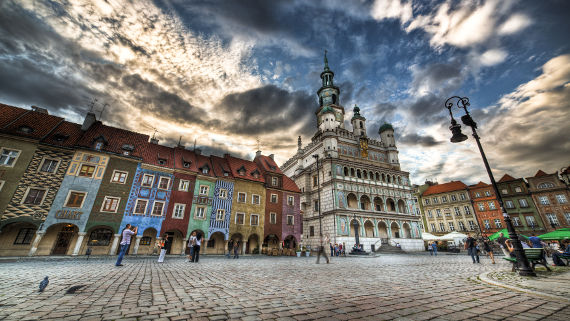
It is the third largest Old Market Square in Poland. It covers an area of 2 hectares and is almost a regular square 141 m x 141 m. It is mostly surrounded by two-storey tenements, which in the past served as apartments as well as workshops and shops.
Today, the workshops and most of the shops have disappeared from the Market Square, there are some remaining apartments, shops and plenty of restaurants, cafes and pubs. No one is trading there, except for souvenir salesmens.
In addition to charming tenement houses, the shape of the Old Market is also influenced by the Town Hall and city scales, arches, Mielżyński and Działyński palaces, building houses with arcades, Bamberka monument, four fountains - Proserpine, Mars, Apollo and Neptune - or a pillory, a favorite meeting place for Poznan residents. In the summer there are many café gardens, and pigeons can be found on the market all year round.
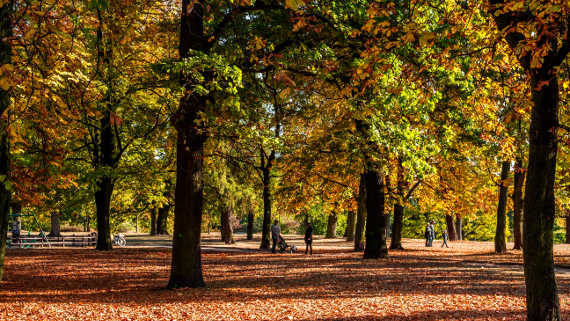
Citadel Park is a large green area located in the northern part of Poznan. It is a favorite place for walks of Poznan residents living in this region of the city, offering a lot of opportunities not only for hiking but also eagerly visited by cyclists.
There are two museums located on its site: Museum of Armaments and Museum Army of Poznan. There are several botanical theme gardens, the remains of the summer theater and several dozen sculptures located throughout the park.
In the nineteenth century, the Citadel contained one of the largest fortresses of Europe at that time, Winiary Fort. Its defensive line was 3 km long and the dry moat was 8 to 12 m deep.
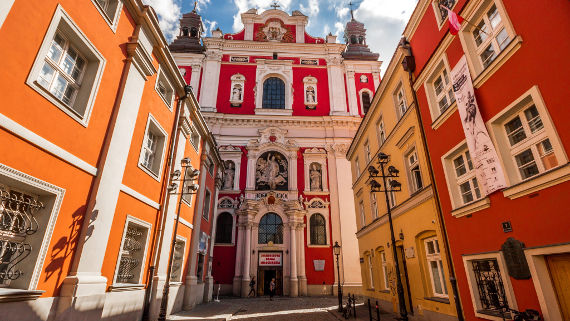
Poznań's pearl of the Baroque. Fara, or the parish church of the city, was built by the Jesuits. Construction began in 1651, but it took 54 years to consecrate the church. The construction of the church was supervised by Italian architects - the facade was designed by Giovanni Catenazzi, the main portal and the altar - Pompeo Ferrari. The Italian artists made Baroque the "triumphant baroque", as it was called a very expressive version of this style, created by Roman architects. 16 powerful artificial marble columns, rich polychromy and a pseudocopulus creating the illusion of a real - to this monumental altars, many sculptures and paintings. And organs, made in 1876 by Friedrich Ladegast, which consist of 2579 pipes - the largest one has six meters.

An artificial lake located in Poznań on the right side of the Warta River. The water reservoir occupies an area of 67.5 ha (depends on the degree of accumulation) and its length is about 2.2 km (circumference 5.6 km), which makes it the largest artificial water reservoir in the city. The lake, where many important canoeing and rowing races take place, was established in 1952 by damming up the Cybina River. The regatta course (one of the best regatta tracks in Europe) is 2190 m long and 170-400 m wide.
In the western part of the lake is the largest fountain in Poznań, funded to commemorate the 750th anniversary of the city. A great attraction of nature is the underground hot springs found in Malta, which were used in the largest aquapark in Poland. Along the northern shore of the lake runs railway line called: Maltanka, whose final station - Zwierzyniec - is located near the entrance to the Wielkopolski Zoological Park (New Zoo). On the southern side of the river - on the Freedom hill, there is an artificial, all-year-round ski slope and a summer toboggan run.
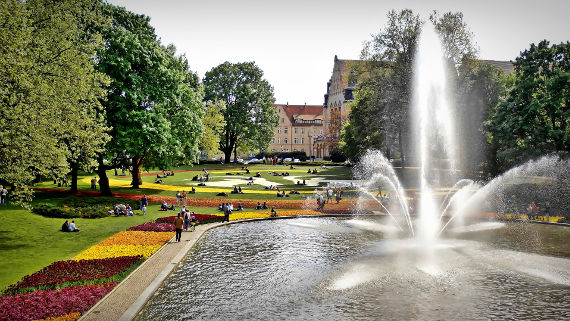
Historic city park in Poznań, in the Imperial district. One of the most magnificent parks in the city, located between Fredry, Wieniawskiego, Święty Marcin and Aleja Niepodległości streets.
The design of the entire district was realized by Joseph Stübben in the early 20th century. In the center of the park there is a high fountain (from the period of foundation, rebuilt). In the northern part, a representative staircase was arranged, constituting an urban setting for the perspective of the Grand Theater (beginning of the 20th century). In the southern part of the foundation, which gently passes into the Adam Mickiewicz square, there are two monuments: Victims of June 1956 and Adam Mickiewicz. Formerly standing in this area: the Bismarck monument (until 1919) and the monument of the Sacred Heart of Jesus (until 1939). Both parts of the park (southern and northern) connect with each other with the help of the plane rows, which, thanks to the spaced benches, are also recreation and reading areas.
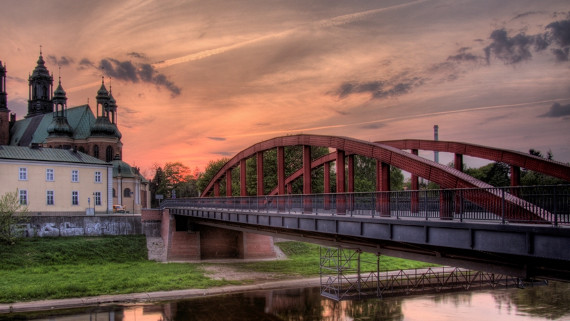
Ostrow Tumski in Poznan is the only island currently located on the Warta River. It is the oldest part of the city, according to the latest research, the first stronghold existed here in the ninth century. The city received the name Poznan, probably from the name of its founder - a certain Poznań. Here, in 966, the baptism of Poland took place, and in 968 the first Polish bishopric was created. The bodies of the first Polish rulers were buried here. During the reign of Mieszko I, the construction of the first Polish cathedral and the largest princely residence in those days was commemorated.
Ostrow Tumski is probably the most magical place in the city. This place still jealously guards the secrets of the past. Recently, a team of archaeologists has found a chapel funded by Dąbrówka (Dubravka) - a Czech wife of Mieszko I. The relics of this building are located in the vaults of the church of the Virgin Mary in Summo. This chapel was probably part of the abovementioned princely residence.